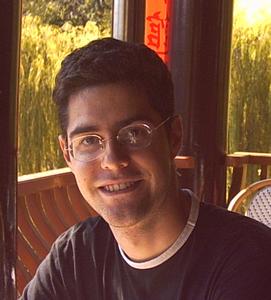


The entire field of molecular electronics relies on a very simple concept: a single organic molecule or a thin layer of organic molecules is used as a bridge between two metallic contacts. The bias voltage applied induces a current from one contact to the other. The basic idea is that the current is dominated by the chemical properties of the molecule between the contacts and that this electric characteristic can be easily tuned by an external perturbation in order to get a switch. However, despite intense investigations many issues are still waiting to be fully addressed. One of them is the dissipation induced in the molecule by the coupling between the vibrational modes and the charge carriers.
In order to handle such problems we have implemented a code based on DFTB (a tight-binding approximation of DFT) and Non equilibrium Green functions to describe scattering processes in molecular devices. The code has been applied to investigate dissipation in molecular systems and to analyze and describe inelastic electron tunneling spectroscopy (IETS) measurements. IETS uses the inelastically scattered electrons as probes to get the vibrational spectrum of the molecule bridging the contacts and it is becoming more and more popular in the field of molecular devices. My theoretical study is focused in trying to understand which are the possibilities of this technique in molecular electronics and investigate its characteristics (as selection rules).



The entire field of molecular electronics relies on a very simple concept: a single organic molecule or a thin layer of organic molecules is used as a bridge between two metallic contacts. The bias voltage applied induces a current from one contact to the other. The basic idea is that the current is dominated by the chemical properties of the molecule between the contacts and that this electric characteristic can be easily tuned by an external perturbation in order to get a switch. However, despite intense investigations many issues are still waiting to be fully addressed. One of them is the dissipation induced in the molecule by the coupling between the vibrational modes and the charge carriers.
In order to handle such problems we have implemented a code based on DFTB (a tight-binding approximation of DFT) and Non equilibrium Green functions to describe scattering processes in molecular devices. The code has been applied to investigate dissipation in molecular systems and to analyze and describe inelastic electron tunneling spectroscopy (IETS) measurements. IETS uses the inelastically scattered electrons as probes to get the vibrational spectrum of the molecule bridging the contacts and it is becoming more and more popular in the field of molecular devices. My theoretical study is focused in trying to understand which are the possibilities of this technique in molecular electronics and investigate its characteristics (as selection rules).